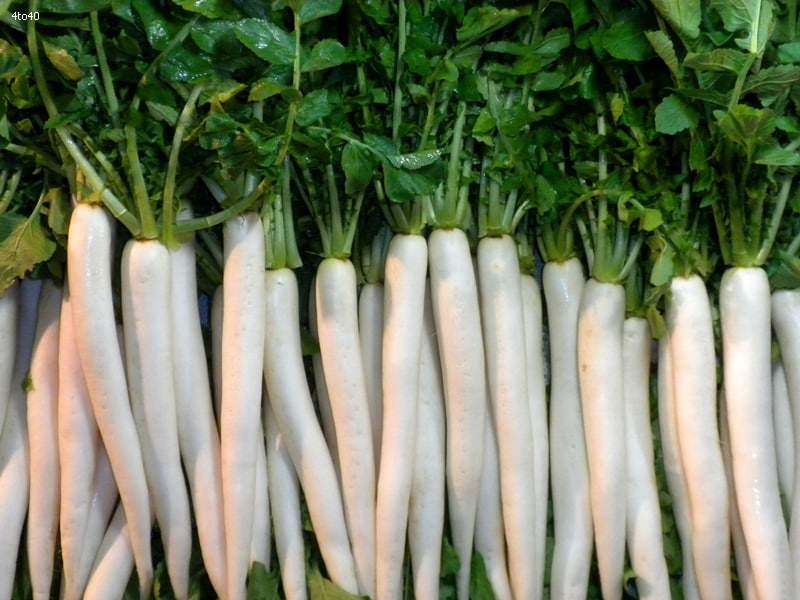
Radish Farming Business in India – Full Information

Radish is a root vegetable. It is used for making raw salads, vegetables, greens or pickles. In our country, it is cultivated throughout the year. As a result, the radish crop matures very quickly. Moreover, in the last few years, the demand and price of radish have increased significantly.
As a result, farmers used to consider radish cultivation as a loss-making deal. But now its price is also reasonable in the market like other crops. Therefore, farmers can get more profit from this in a short time. First of all, let us know the climate required for the cultivation of radish. Due to this, you will be very comfortable in cultivating it.
Climate
Radish cultivation requires a cool climate. But some unique varieties can be cultivated throughout the year. The temperature of 10 to 15 centigrade is suitable for the radish crop. However, its yield becomes bitter and hard when the temperature is high. Therefore, farmers are advised to cultivate it only in the winter season.
It is mainly produced in India in West Bengal, Bihar, Punjab, Assam, Haryana, Gujarat, Himachal Pradesh and Uttar Pradesh.
Soil
Fertile sandy loam soil is considered suitable for radish. However, to get good production of radish, use organic loam or sandy loam. The pH value of soil is 6.5 to 7.5. For this, get the soil tested from Krishi Vigyan Kendra or another soil testing centre.
Improved Varieties of Radish
Before doing Radish cultivation, the first thing that comes to the farmer brothers is which variety to choose from to get a better price in the market. So let us tell you, at the seed store, you will find many improved types of radish-like – Japanese Safed, Pusa Deshi, Pusa Chetki, Arka Nishant, Jaunpuri, Bombay Red, Pusa Reshmi, Punjab Ageti, Punjab Safed, I.H. R1-1 and Kalyanpur Safed are easily available. Apart from this, White Isley, Rapid Red, White Tips, Scarlet Globe and Pusa Glacier are suitable temperate regions.
Farm Preparation
The month of September to November is suitable for the
of radish. You can do this anytime after the rain is over. First ploughing is done by soil turning plough and 2-3 ploughing with cultivator or country plough.
For ploughing, we need a tractor and its equipment so that ploughing can be easily done, and for this work, Mahindra Tractor is the best. While ploughing, apply 200 to 250 quintals of rotten cow dung per hectare.
Sowing and Seed Treatment
Farmer brothers also have a question: how much seed is required per hectare to cultivate radish, and how to treat the seeds?
So let us tell you that 10 to 12 kg of radish seed per hectare is sufficient. This is because seed treatment 2.5 grams of Thiram can be used for one kilogram of seed.
When and How to Sow?
The months of September-October are most suitable for sowing radish, but some species can be sown at different times. For example, the Sowing of Pusa Himani is done from December to February. On the other hand, Pusa Chetki species can be planted from March to mid-August.
Radish is sown in bunds or flatbeds. Keep the distance from line to line or bunds to ridges 45 to 50 cms. Plant to plant distance should be kept 5 to 8 cm. Sowing should be done at a depth of 3 to 4 cm.
Manure and Fertilizer Management
Farmer brothers, for the cultivation of radish, 200 to 250 quintals of rotted cow dung should be given while preparing the field. Along with this, apply 80 kg nitrogen, 50 kg phosphorus and 50 kg potash per hectare.
Give a half dose of phosphorus and potash before sowing and half dose of nitrogen in standing crop twice. 1/4 amount of nitrogen should be given at the time of plant growth and 1/4 at root growth.
Irrigation Management
In a radish crop, first irrigation should be done after 3-4 leaves appear. Irrigation in radish has to be done more or less according to the moisture of the soil. Irrigation must be done at an interval of 10-15 days in winter and every week in summer.
Weed Management
There is a problem with weeds in radish cultivation. Farmers friends have the same question that how to control weeds and weeds in radish crops?
So let us tell you, do weeding and hoeing 2 to 3 times in the entire crop. Once the roots start growing, soil the ridges once. For weed control, sprinkle 3.3 litres of Pendimethalin with 600 to 800 litres of water per hectare within 2 to 3 days immediately after sowing.
Pest Control
Farmer brothers, along with diseases, there is an outbreak of pests in Radish Crops. In the radish, Manhua, Moong, Hairy worm, Hemispherical larva, Ara fly, Diamond bacterium insect are found. Use Malathion 0.05% and 0.05% Dichlorvos to control them. Spray Thiodan, Indocel @1.25Ltr/ha. 10% B.H.C. Or you can also sprinkle powder of 4% Carbary.
Harvesting and Marketing
Farmer brothers, when the roots of radish in the field become edible for harvesting, that is, after 45 to 50 days after Sowing, remove the roots safely and clean them and sell them in the market later. Thus, farmers get more income by cultivating early radish.
Apart from this, after processing the radish, you can make its salad and pickle and sell it in the market, which will give you more profit. In the end, the farmers would like to tell their friends that they must do radish cultivation as a co-crop to take advantage of radish cultivation on the same land.
We hope so that you are satisfied with this information. If you want to know more farming-related information, please be with us and wait for our next blog.